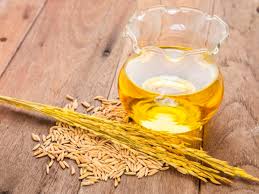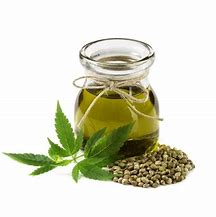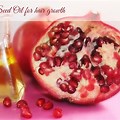Ricebran Oil






Ricebran Oil
Ltin Name: Oryza sativa
Family: Poaceae, Graminae
Etymology: Sativa is the botanical term for cultivated, planted deliberately.
Method of Extraction: The oil is refined
Principal Constituents:
| Type | Based on | Content -% |
| Monounsaturated fatty acid | ||
| C18:1 | oleic acid | 43.6 |
| Polyunsaturated fatty acid | ||
| C18:2 | linoleic acid | 36.6 |
| C18:3 | linolenic acid | 1.8 |
| Typical fatty acid content | 16.3 |
Physical properties
| Colour Lovibond | 3.0 R max / 30.0 Y max |
| Free fatty acids | 0.05% max |
| Iodine value | 98-108 |
| Peroxide value | 1.5 max |
| Saponification value | 185-195 |
| Unsaponifiable matter | 2.5% max |
| Smoke point | 500F |
| Specific gravity @ 25C | 0.913-0.919 |
| Refractive index 25C | 1.470-1.473 |
Benefits to the skin
The main benefit of rice bran oil to the skin is its wonderful deep-moisturizing capability. This is due to its combination of vitamin E and fatty acids, which go deep into skin to hydrate. It’s recommended as an alternative to the popular lanolin, so keep plenty of skin cream with rice bran oil around for those cold, harsh winter months.
Concerned if you have oily skin? Try it anyway. Rice bran oil is light and penetrates easily, so it’s not likely to increase the oiliness of your skin.
How it can help
With all its natural components, rice bran oil is considered an anti-aging secret in Japan. It’s actually a high compliment to tell a Japanese woman that she is a “rice bran beauty.” The natural vitamin E plus vitamin B help firm and tighten your look, maintaining hydration, which helps to reduce the appearance of fine lines and wrinkles.
Rice bran oil also contains “squalane” which is known to help your skin look younger and fresher.
The benefits don’t stop there! Rice bran oil has a slight ability to brighten the look of your skin, helping to reduce the appearance of dark spots and smooth skin tone. Antioxidants like beta-carotene and lycopene protect from environmental stressors, and enzymes like CoQ10 provide active components that help it maintain its youthful glow.
Try it!
This oil is difficult to obtain on a retail basis . As far as cooking is concerned in its unrefined state it has characteristics similar to those of wheatgerm oil (Emmerson & Ewin 1996) Naturally high in tocopherols and ferulic acid (an antioxidant) Reference: Annmarie Gianni
Reference: Carrier Oils For Aromatherapy and Massage: Len Price with Ian Smith & Shirley Price
Articles-Most Read
- Home
- Contact Us
- Coconut Oil-2
- Absorption Ratings for Carrier Oils
- Cold Pressing Method
- What are Essential Fatty Acids
- Cherry Kernel Oil
- Fixed Oils and Skin Penetration
- Hempseed Oil
- Almond Oil
- Cocoa butter
- Camelina Oil
- Antibacterial Effects Of Carrier Oil
- Coconut Oil
- Lime Blossom Oil (macerated)
- Carrot Oil, Wild Carrot Oil (macerated)
- Apricot Kernel Oil
- Kukui Nut Oil
- Jojoba Wax
- Pumkin Seed Oil - Cucurbita maxima, C. pepo
- Passion Flower OIl (Macerated)
- Hydrocotyle Oil (macerated)
- Palm Kernel Oil
- Rapeseed Oil - Carrier Oil
- Nutrients
Who's On Line
We have 14 guests and no members online
Articles-Latest
- How to Make Homemade Olive Oil: A Step-by-Step Guide
- 20 Evidence-Based Aloe Vera Oil Benefits For Skin, Hair & Health
- Peanut oil - Cold pressed - Are There Health Benefits? How To Make
- What Are the Health Benefits of Black Seed Oil?
- Comfrey oil Infused
- Chamomile Flowers Infused Oil
- Calendula Flowers Infused Oil
- Arnica Flowers Infused Oil
- How To Make Herb-Infused Oils
- DIY avocado oil for healthy skin
- How To Make Coconut Oil
- 8 Benefits of Mustard Oil, Plus How to Use It
- SHOREA STENOPTERA SEED BUTTER
- Shea Butter- 7 Amazing Benefits Of Shea Butter
- Monoi Oil For Hair & Skin
- Mango Seed Oil
- Cohune Oil Is The Next Big Thing
- Brazil Nut OIl
- 7 Impressive Benefits Of Allspice
- Camelina Oil Benefits, Uses, and Side Effects




